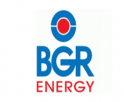The invention relates to a method for the transport of a long windmill wing, wherein the windmill wing is transported on a vehicle, and wherein the windmill wing is secured at its one end to a tractive vehicle and is secured at its opposite end to a non-tractive vehicle. The invention moreover relates to a vehicle for the transport of a long windmill wing, said vehicle being composed of a tractive vehicle to which one end of the windmill wing is secured, and a non-tractive vehicle to which the other end of the windmill wing is secured.
In the production of energy in the form of electricity, ever great demands are made by politicians and citizens in general with respect to replacing the fossil fuels with alternative renewable sources of energy, such as biogas systems, wave systems and windmill energy. Windmill energy in particular has obtained an ever more prominent position in recent years, as it has been developed such that not inconsiderable amounts of energy can be produced by ever more effective windmills.
The greater efficiency of the windmills has been achieved technologically on the basis of the development of new materials having mechanical properties which make it possible today to manufacture windmill wings with a length of up to more than 60 metres and with a weight of about 18 tons. Within a few years it will presumably be possible to manufacture windmill wings which have a length of between 80 and 100 metres.

When so large windmill wings are to be transported from the factory to the installation site, long special vehicles have been used till now where the windmill wing has rested on a long metal connection profile which is connected between the tractive part of a vehicle and a wheeled platform at the opposite end of the vehicle.
Such a vehicle may typically have a weight of the order of 35 - 40 tons. When the weight of the windmill wing is added, the total weight is of the order of 53 - 58 tons, which gives a considerable axle load on the vehicle which transports the windmill wing. As the distance of the connection profile to the surface of the ground is very small, it may of course be difficult to man oeuvre the vehicle round corners if road signs or differences in level, e.g., are present at the corners.
Windmill rotor blades or “wings” measure 45 meters (148 feet) and longer. Double and triple extendable trailers can be used for these long loads hauling two blades at a time. TRP have developed a special trailer that can haul three wings at one time, each 45 m (148 ft) long. The wing transporter has four axle lines, obtained by combining two modular trailers of the Euro Combi type, plus special adapters and extendable beams. The low floor height of the Euro Combi allows the three wings to be carried without exceeding the four-meter (13 ft 1½") legal road height. Swing axles give it a high ground clearance when moving off-road and steering axle displacement up to 60° provides maneuverability at the construction site. The modular trailer is formed as a spine trailer for the transport of wings, but transformed into other configurations for the transport of the cylindrical tower sections, or the very heavy turbine that is mounted at the top of the tower. A 90-tonne turbine, for example, could be hauled by a trailer with 7 axle lines and a 4-axle tractor. Heavy turbine nacelles can be carried by the same heavy-duty modules combining up to 12 axle lines. Hubs weighing up to 20 tones can be transported on flatbeds or drop-decks.











